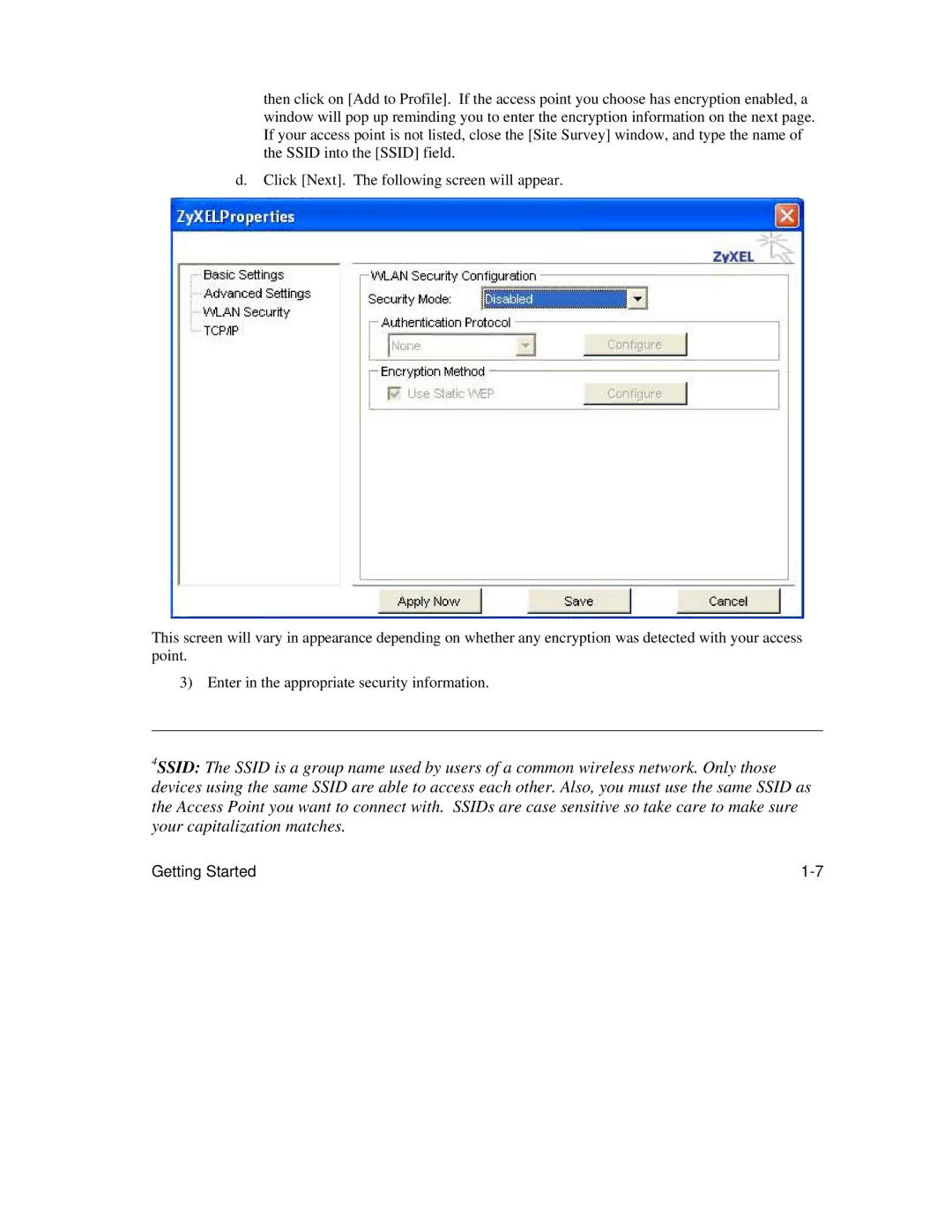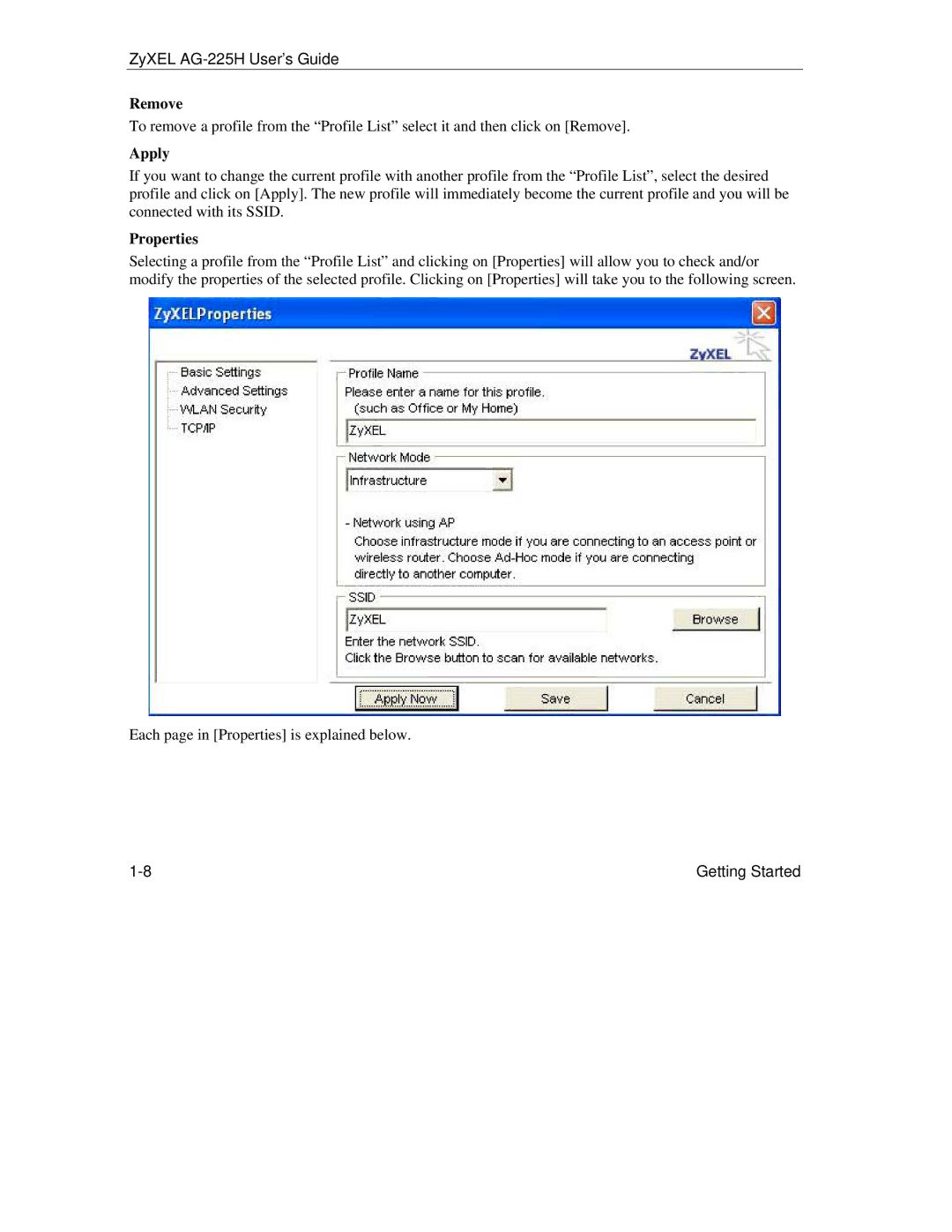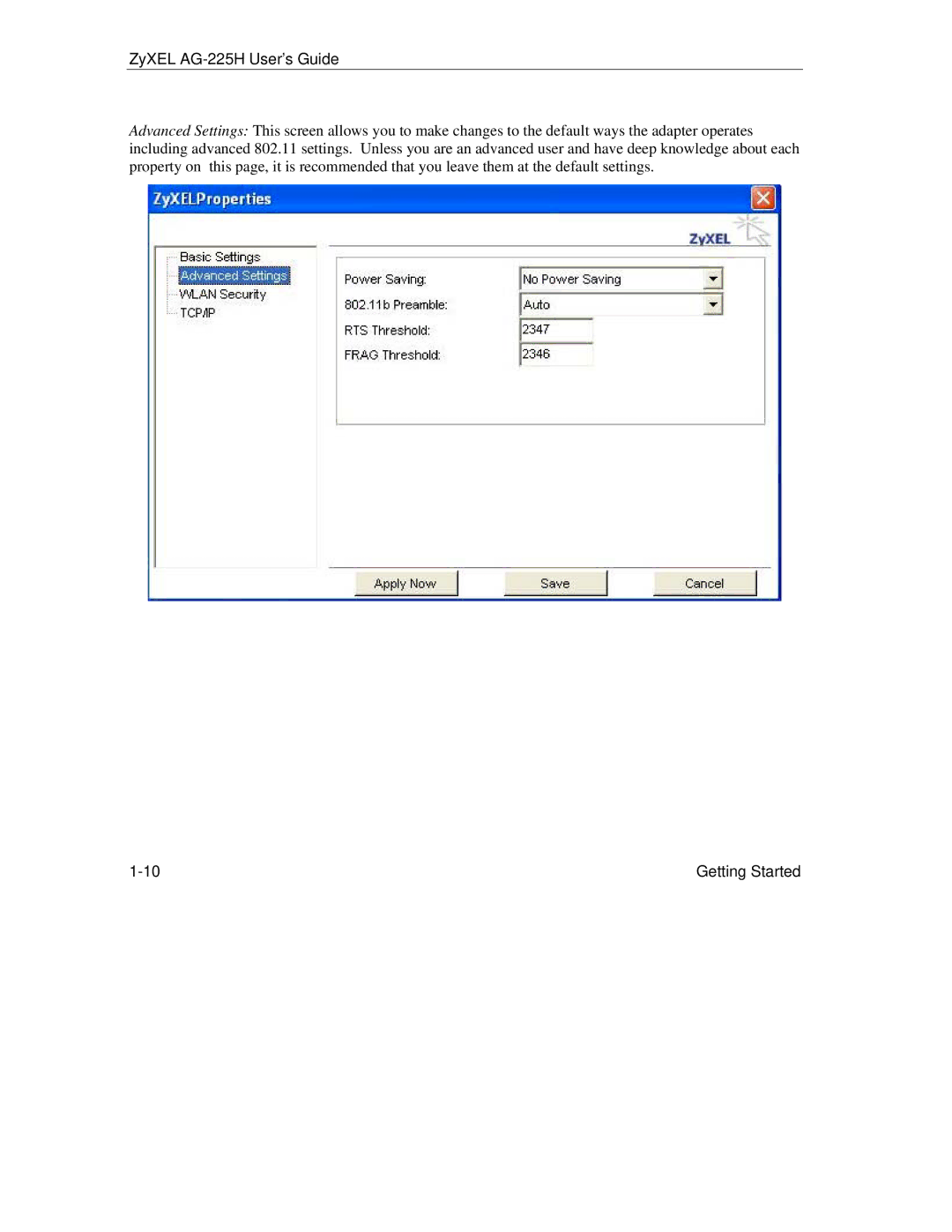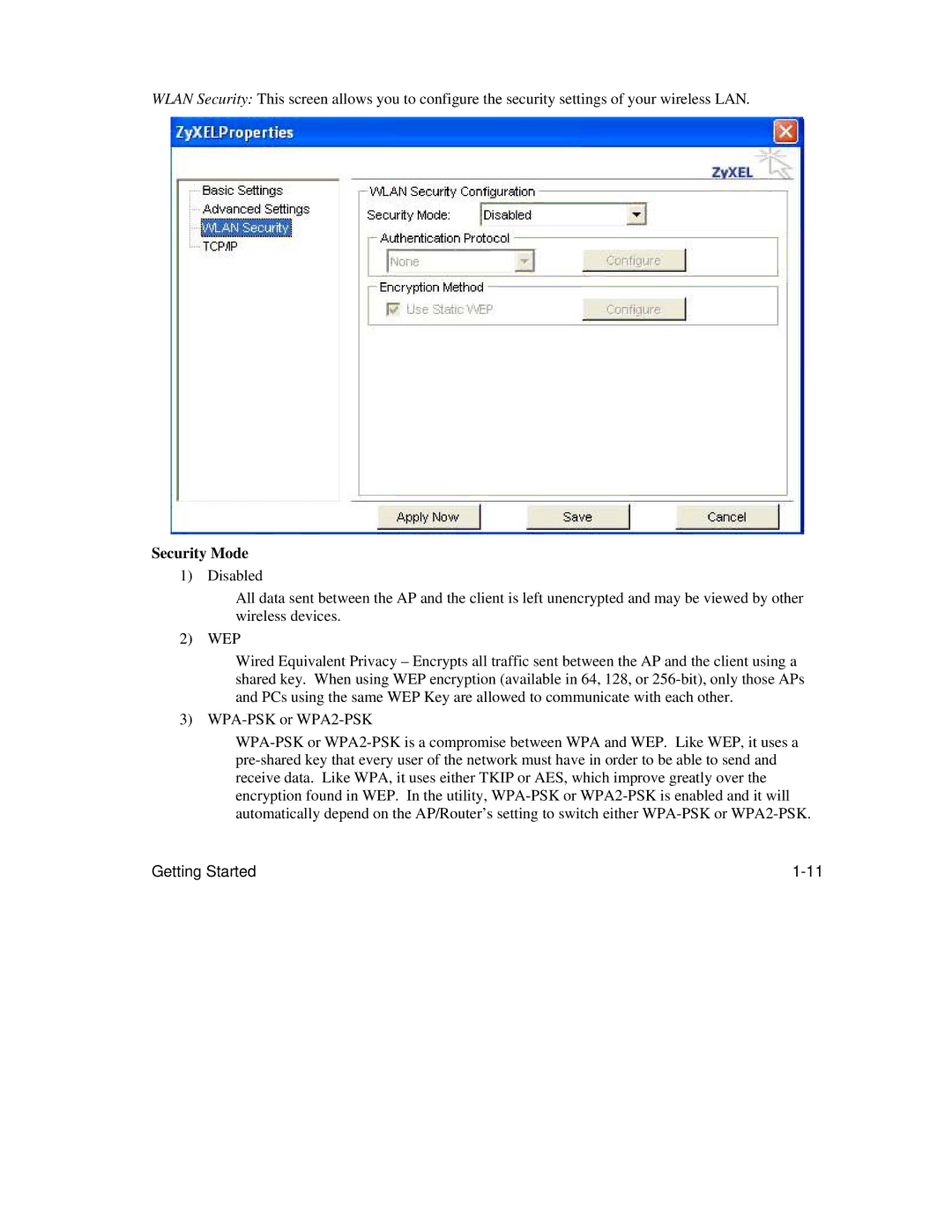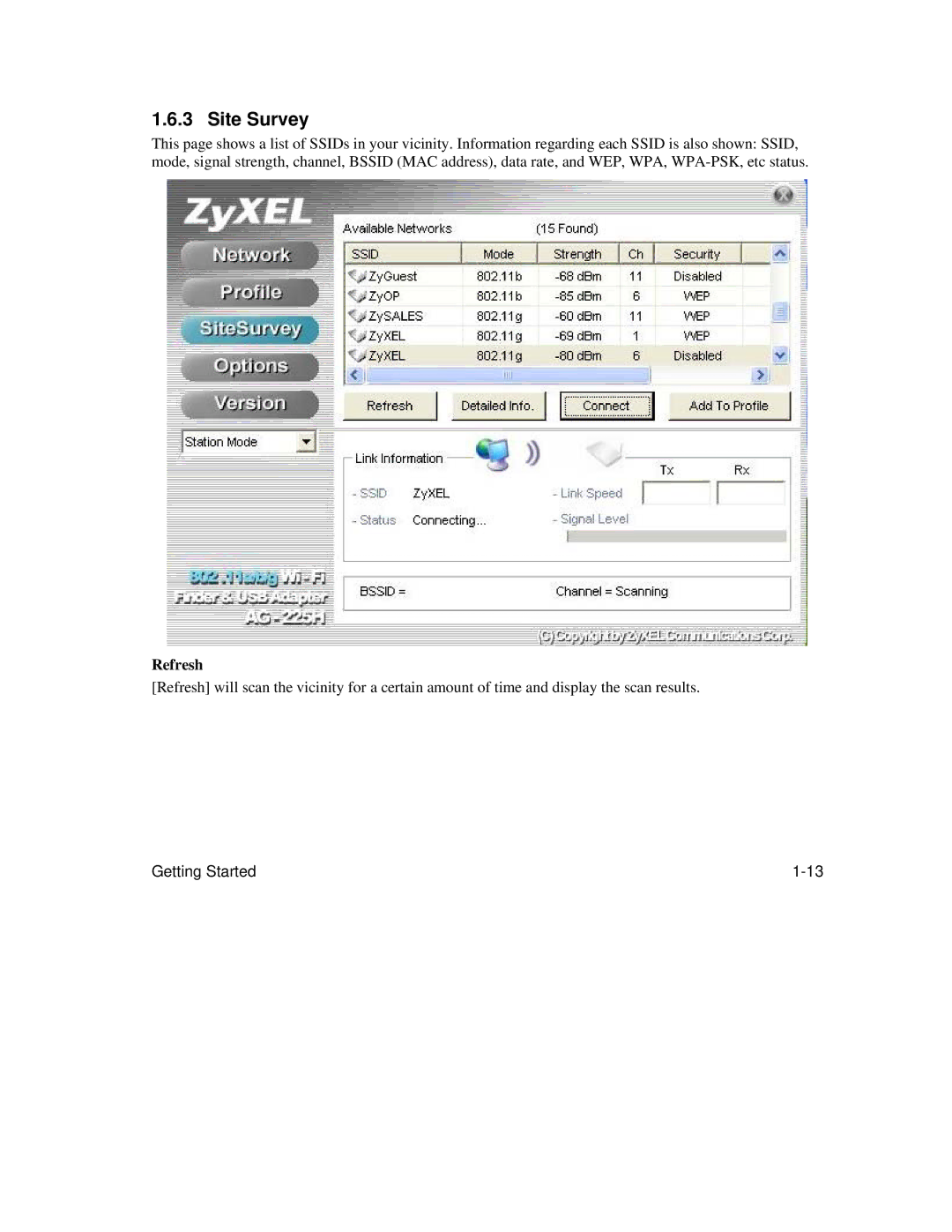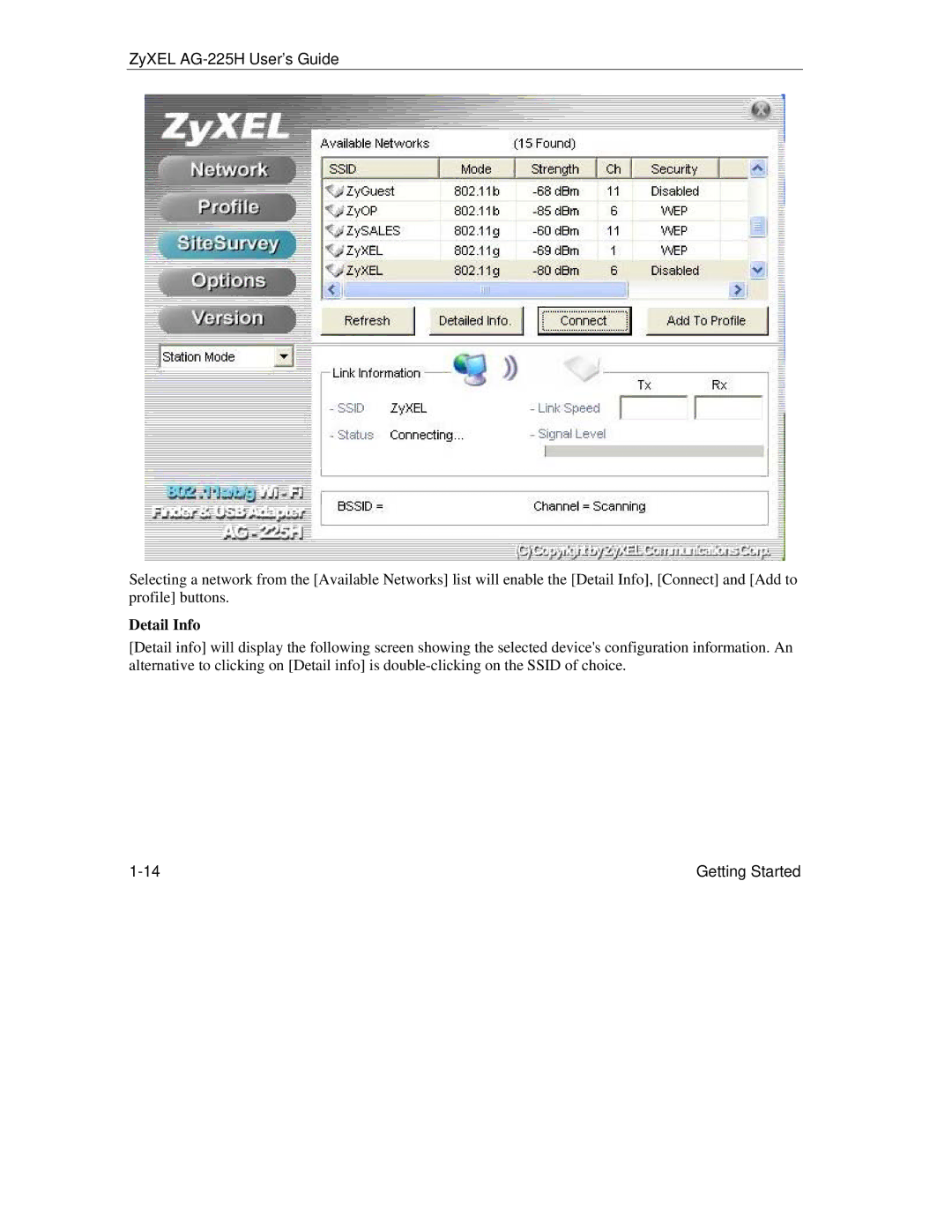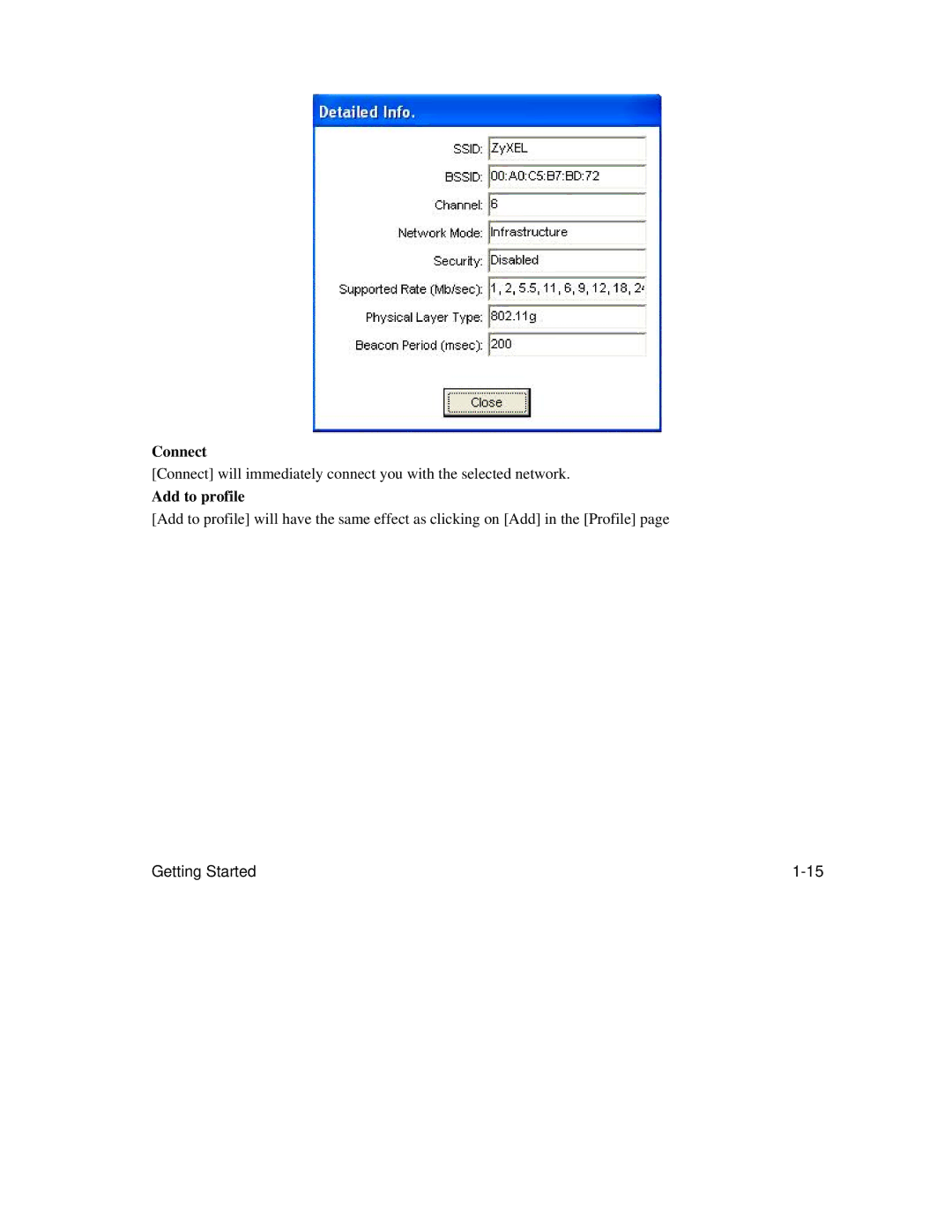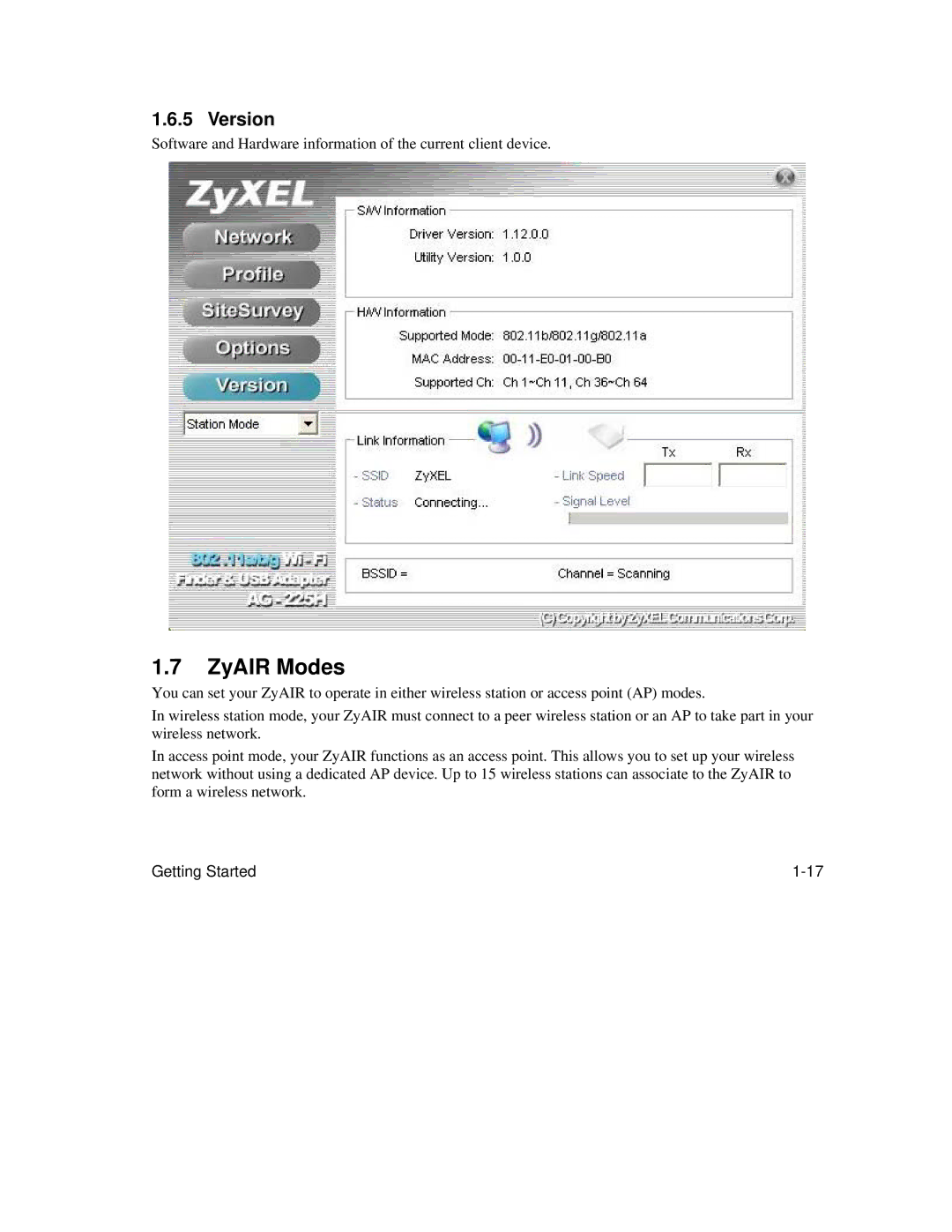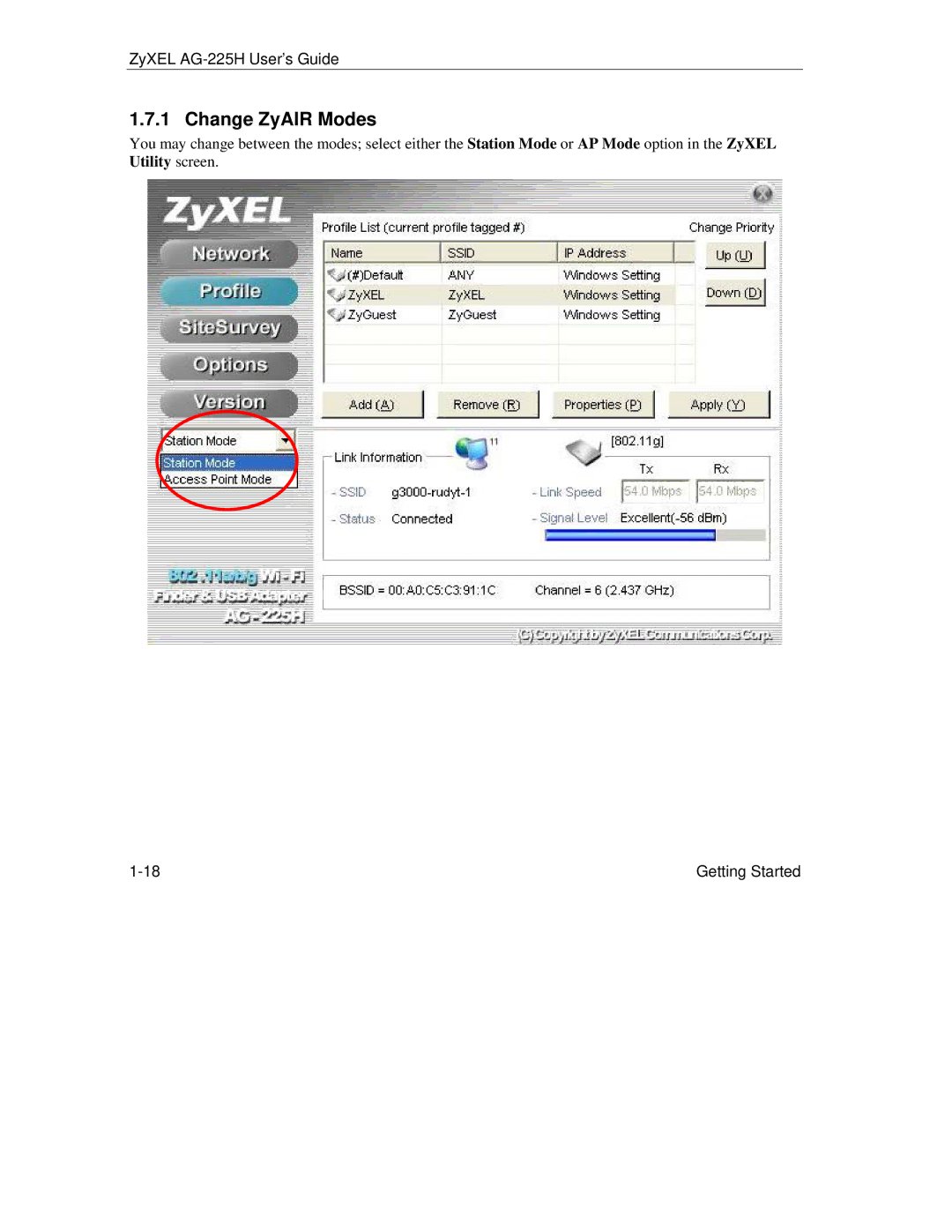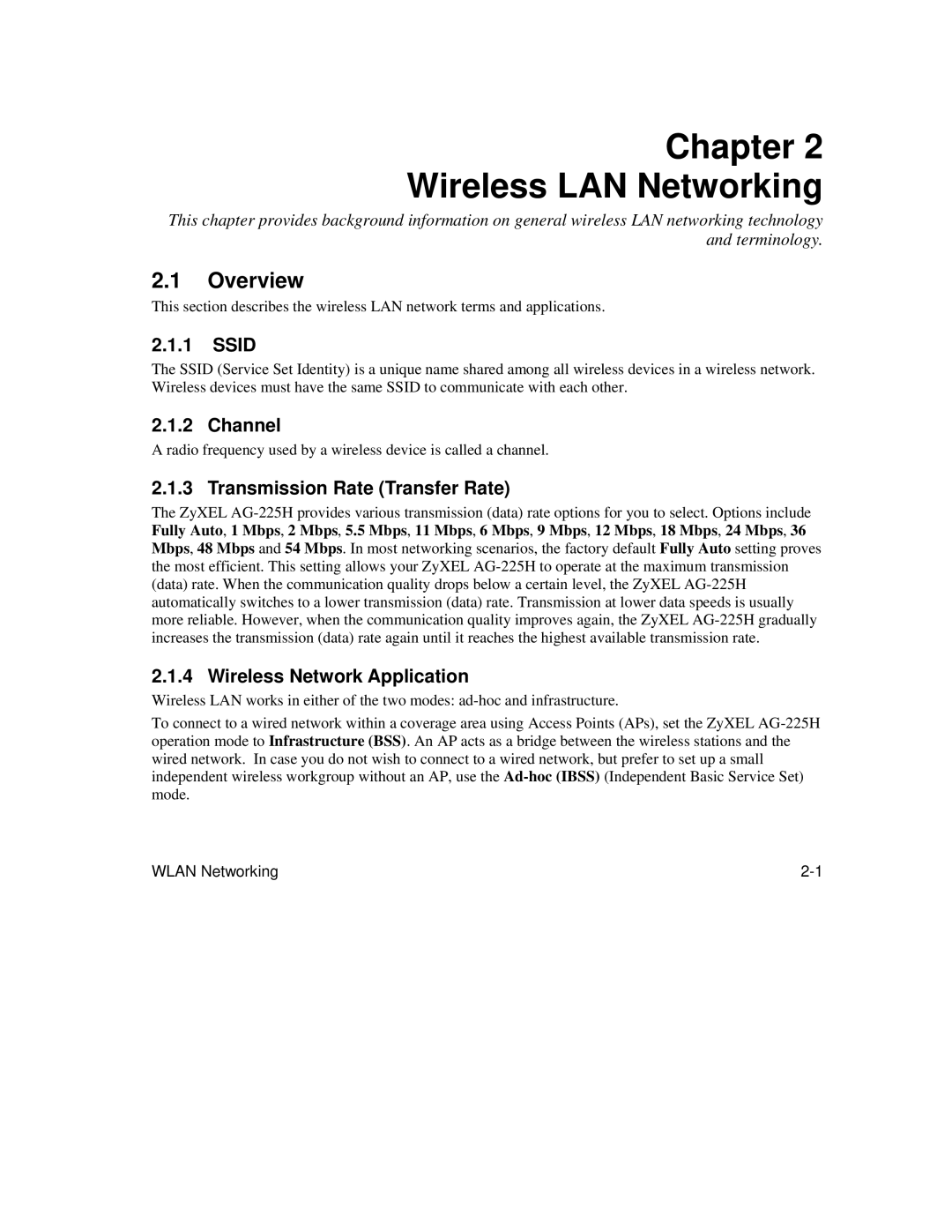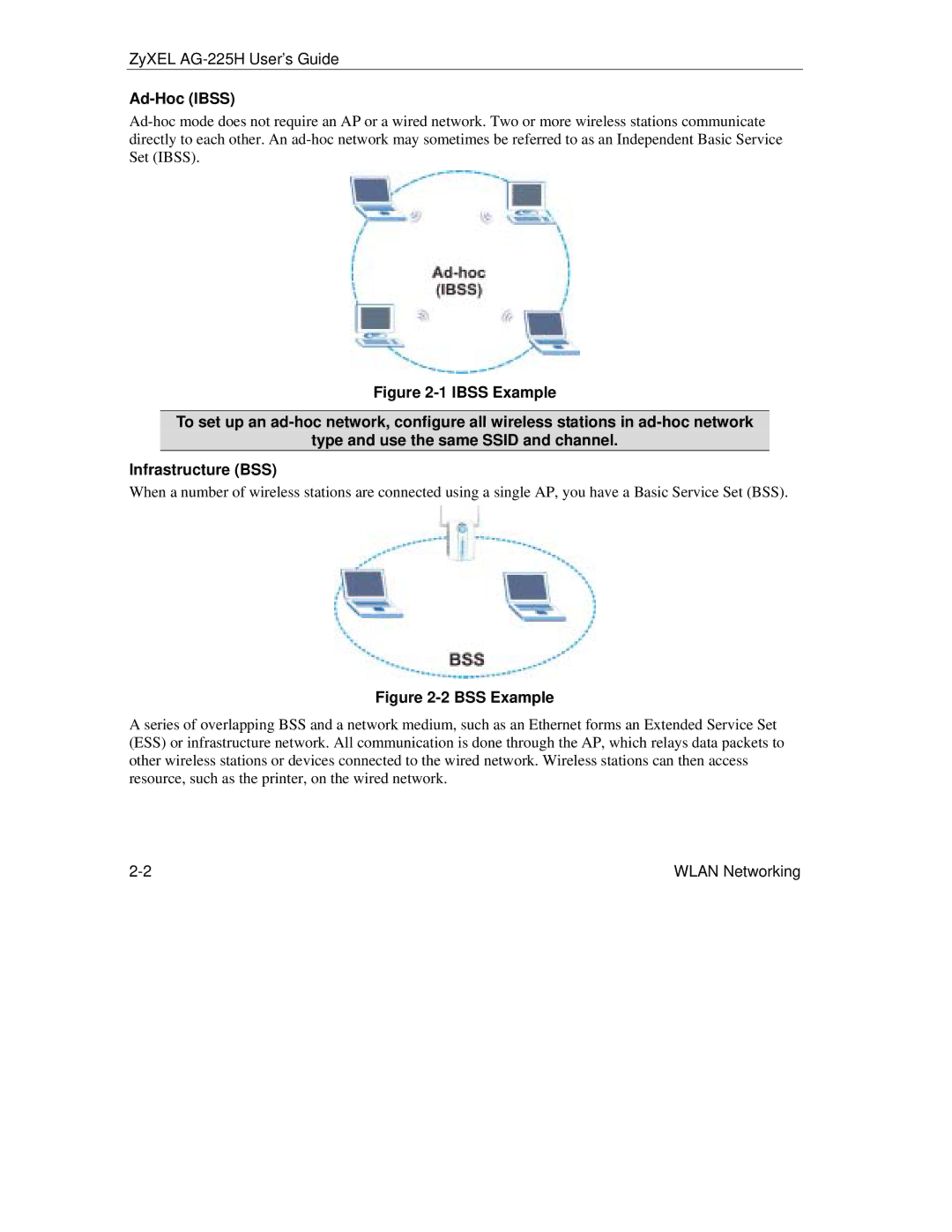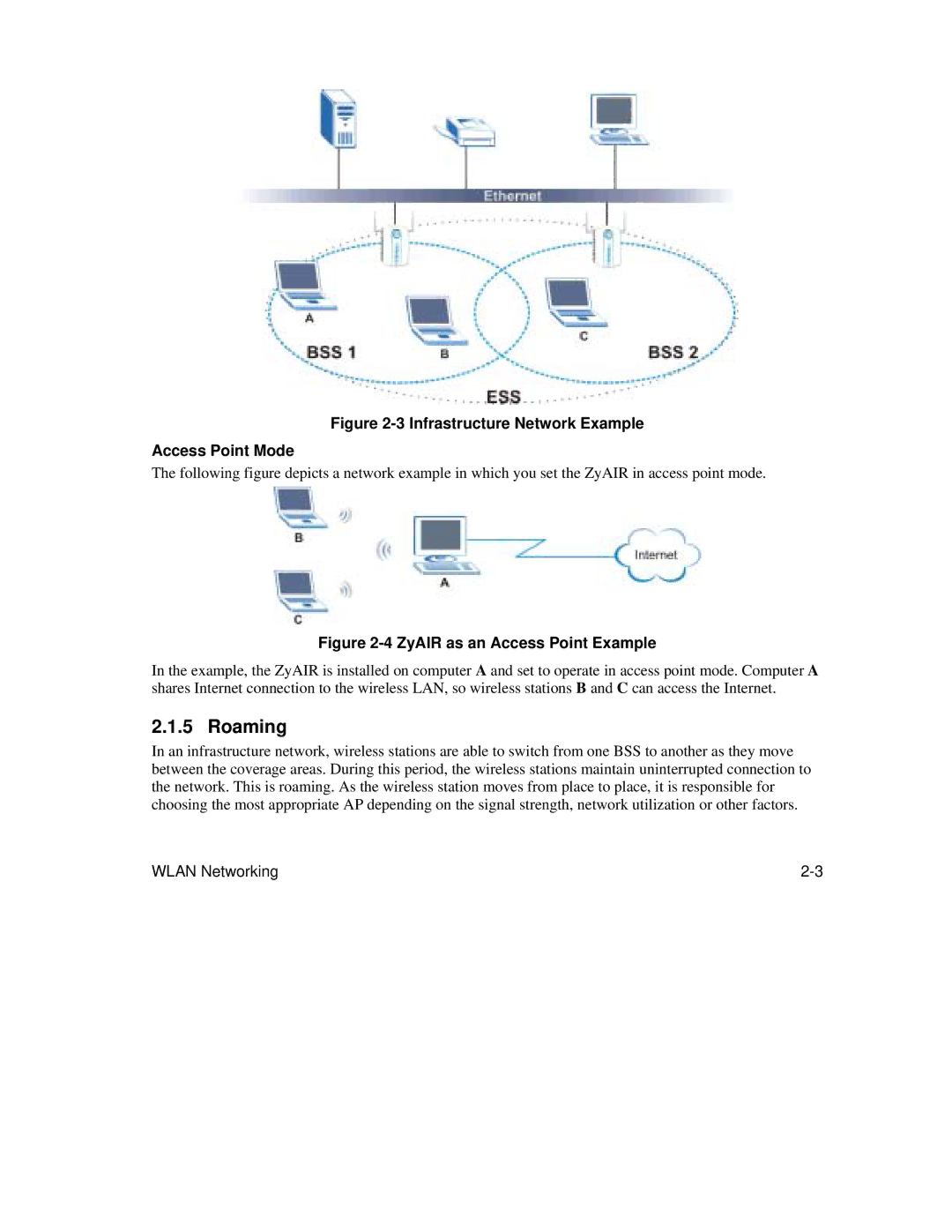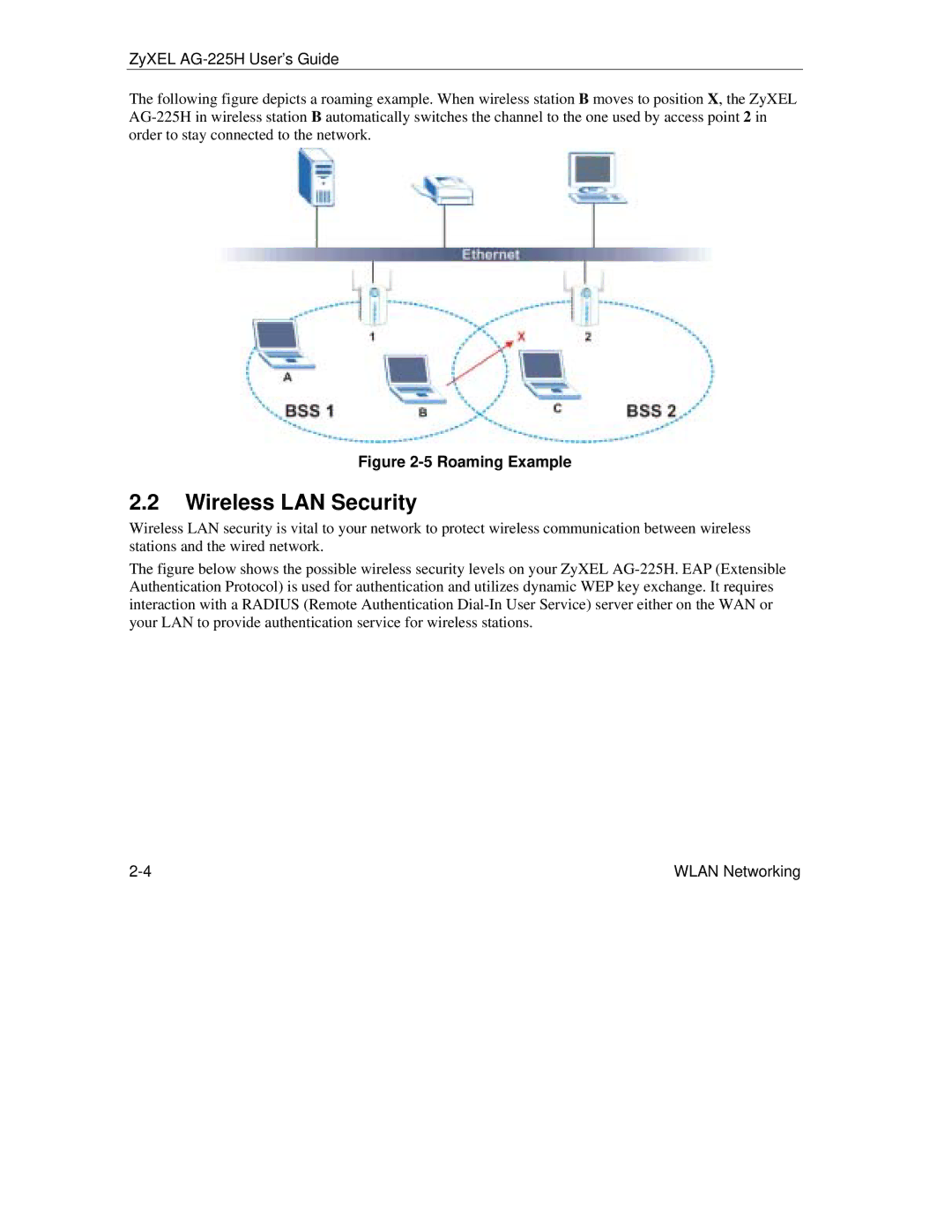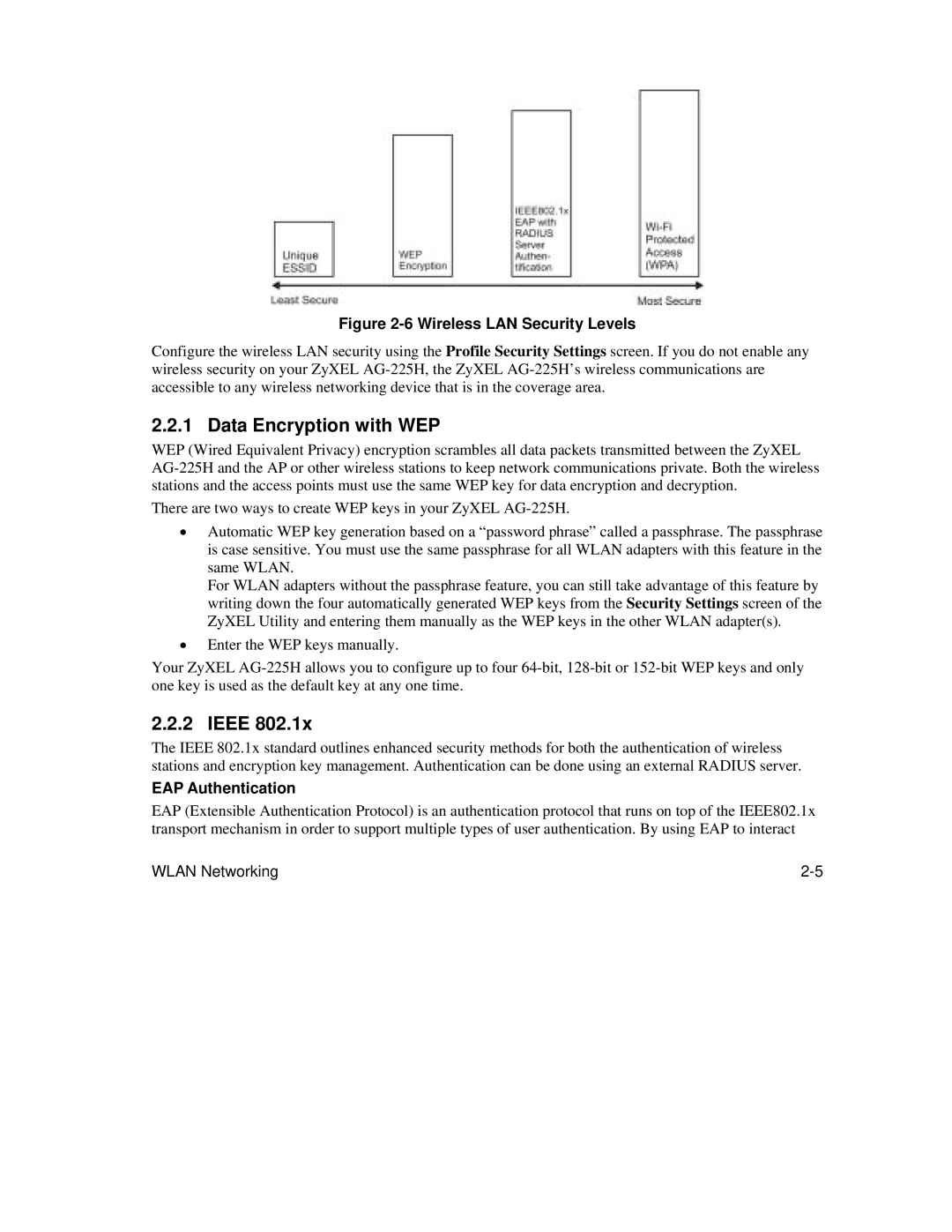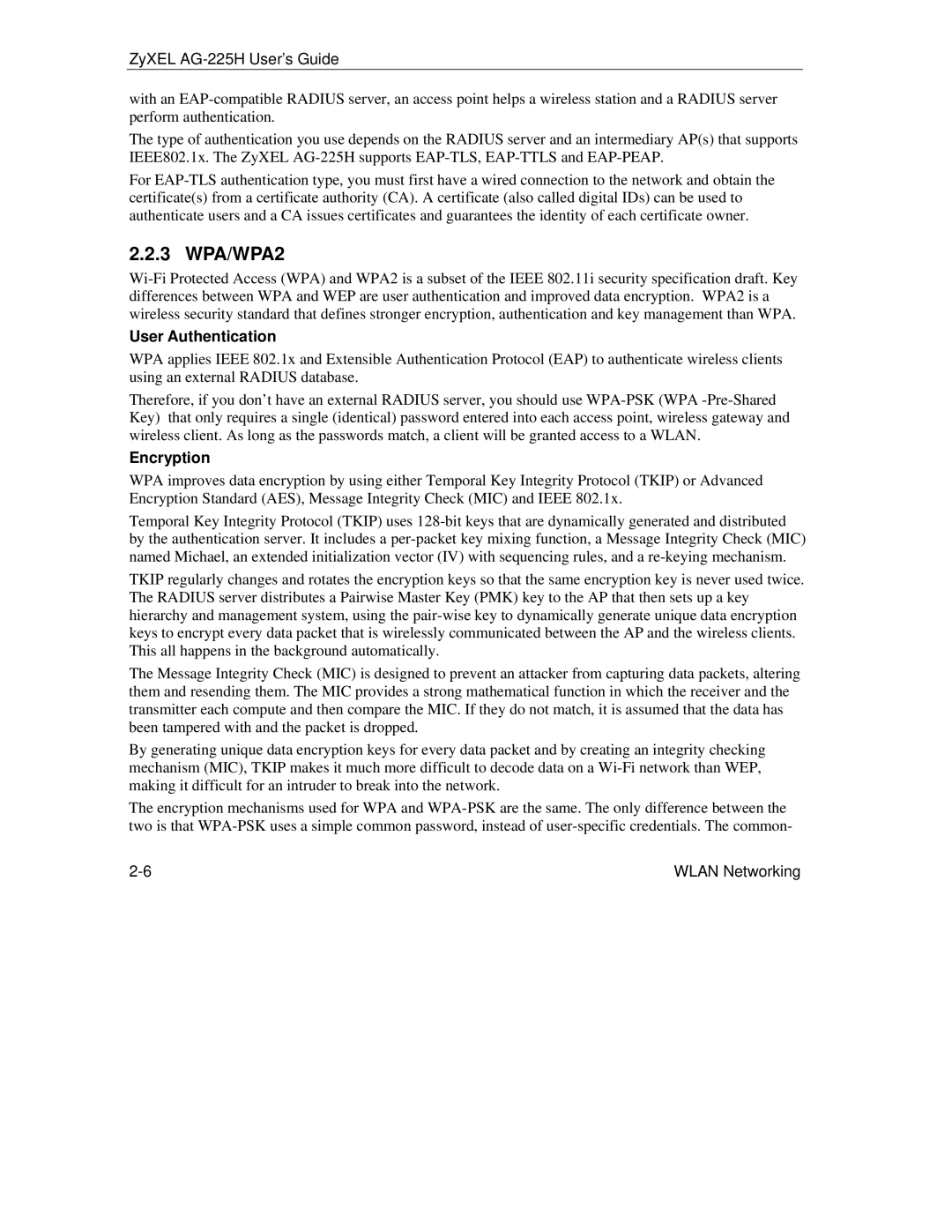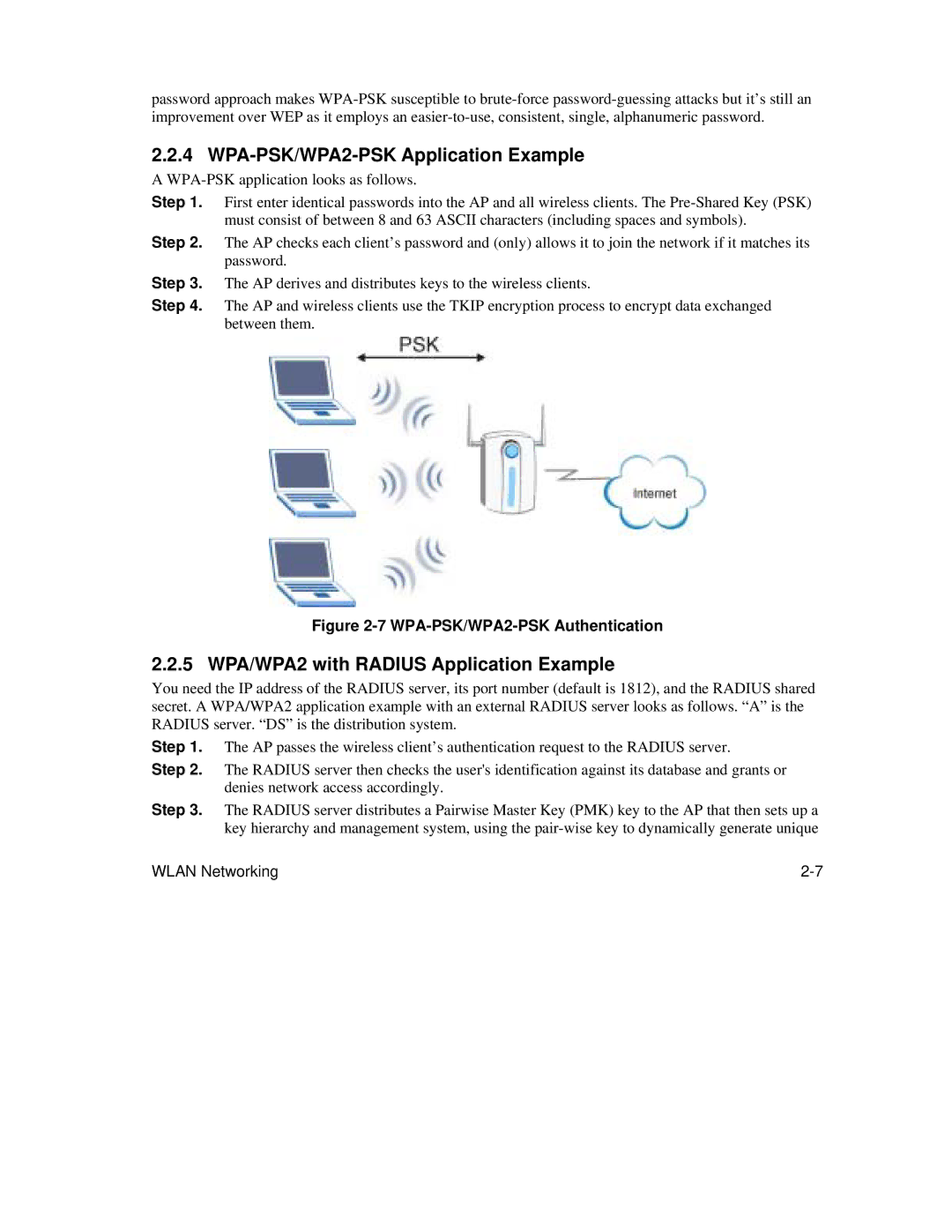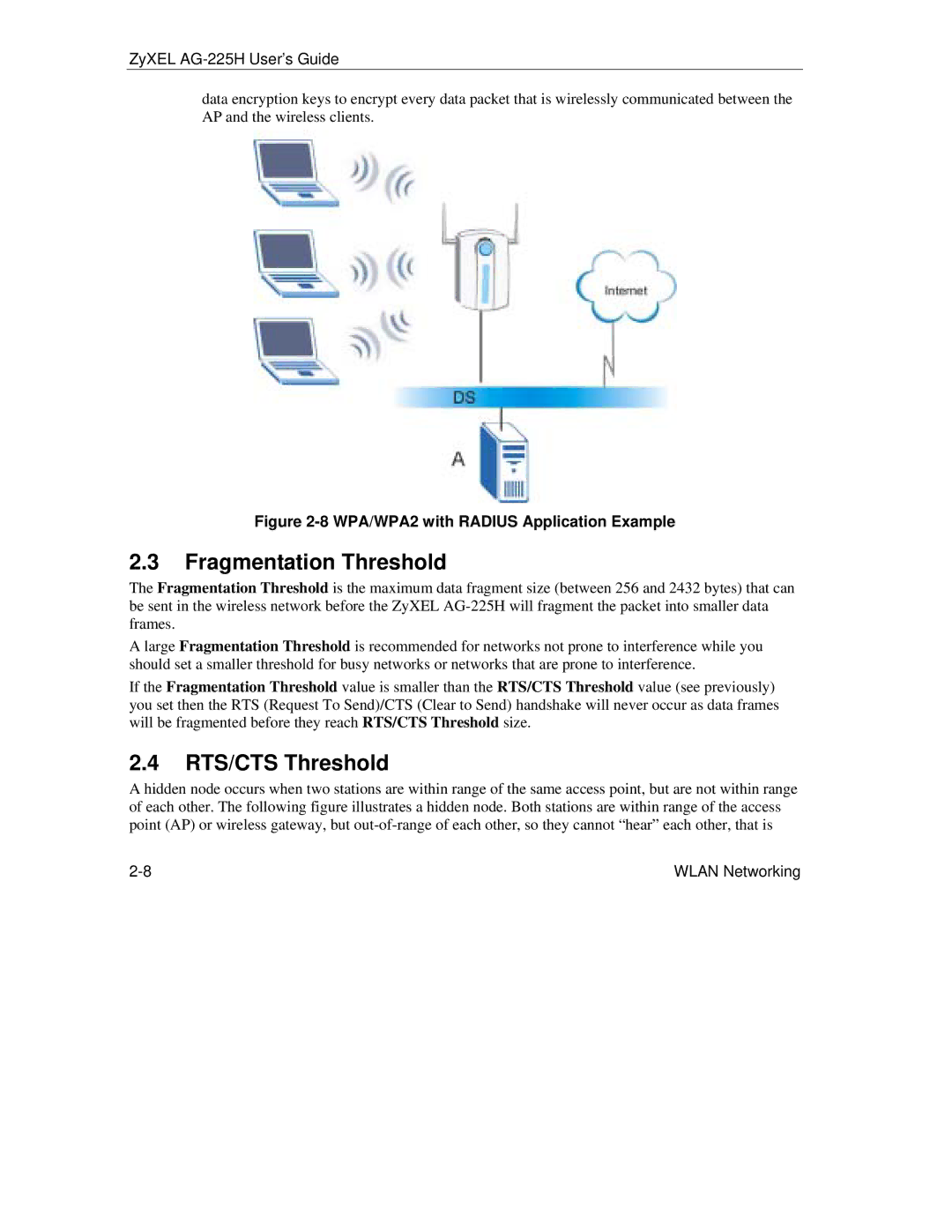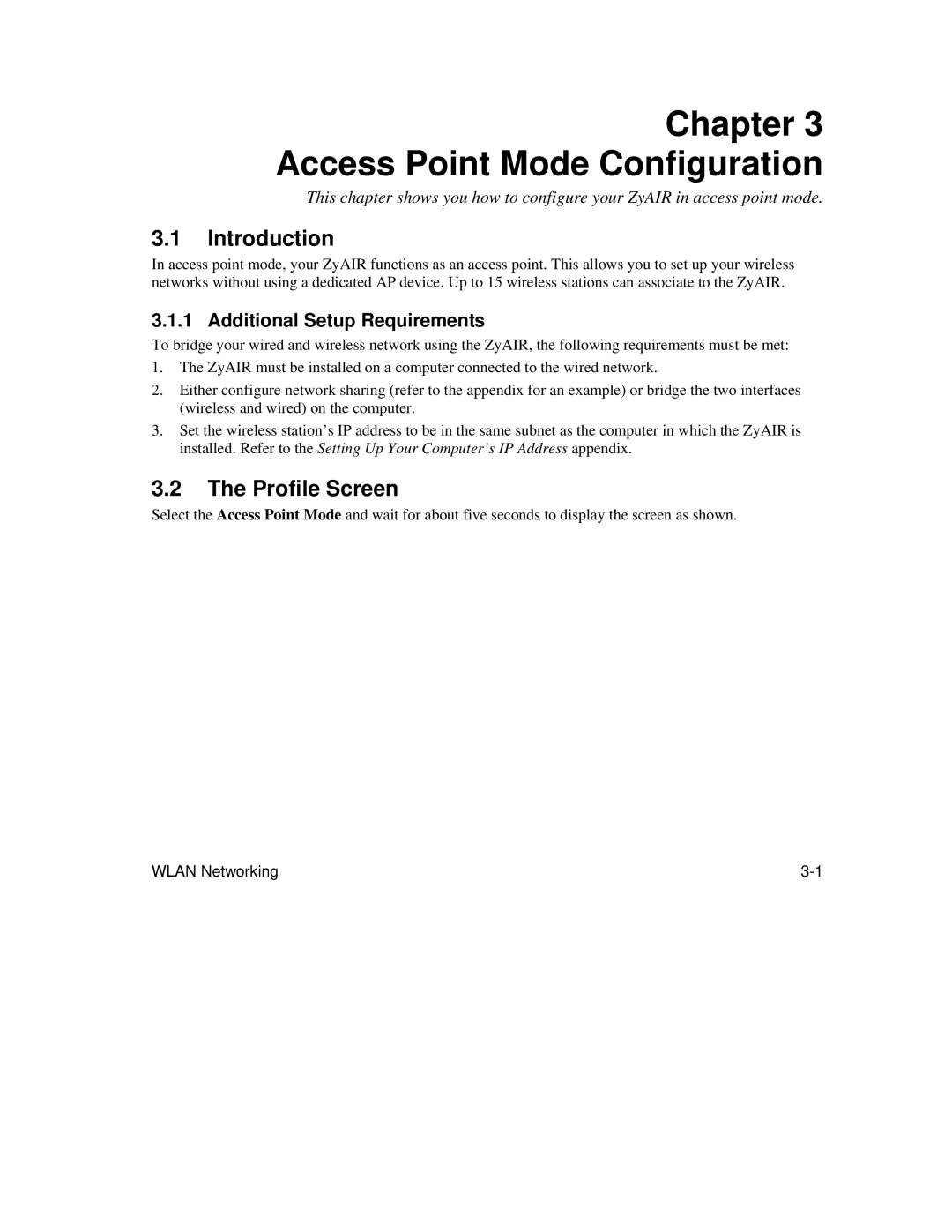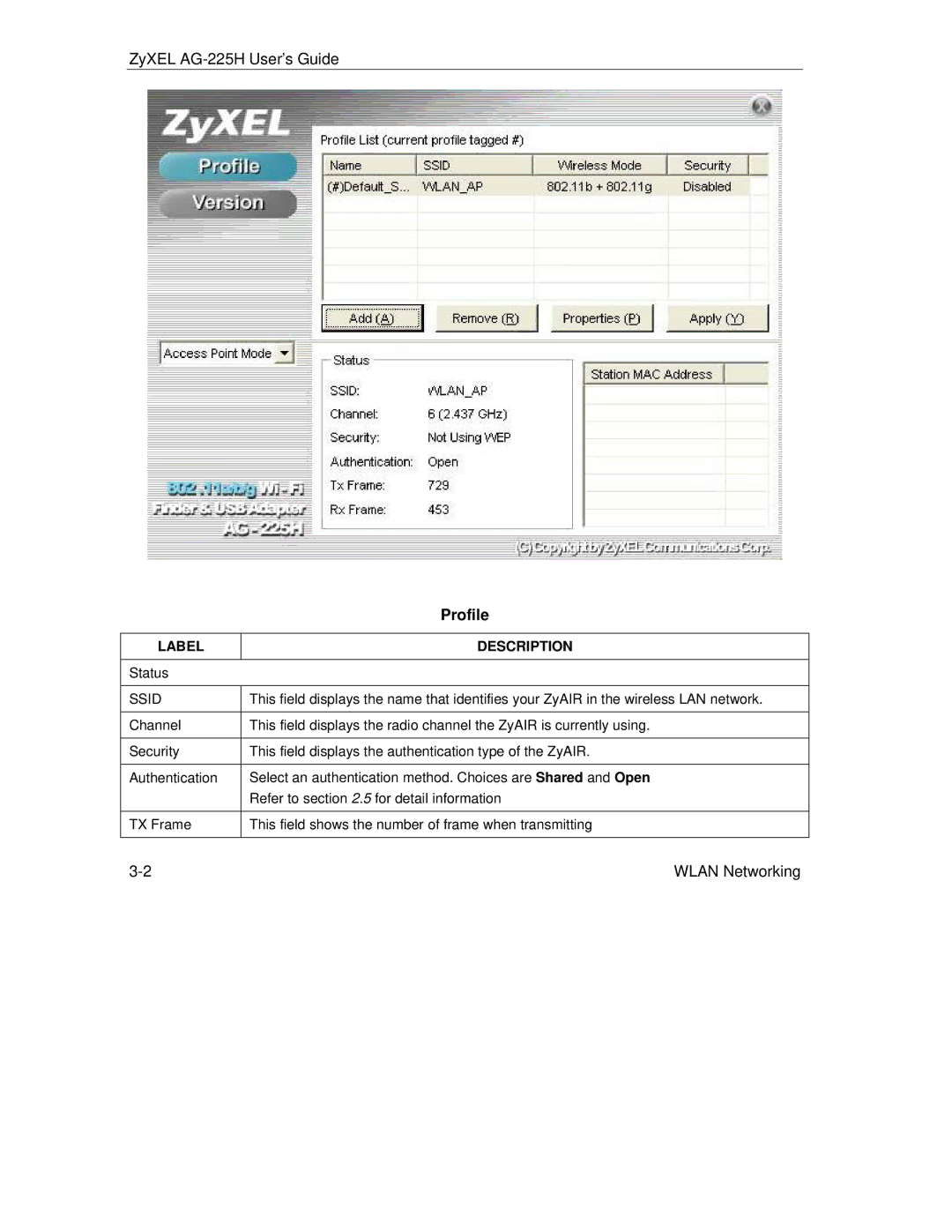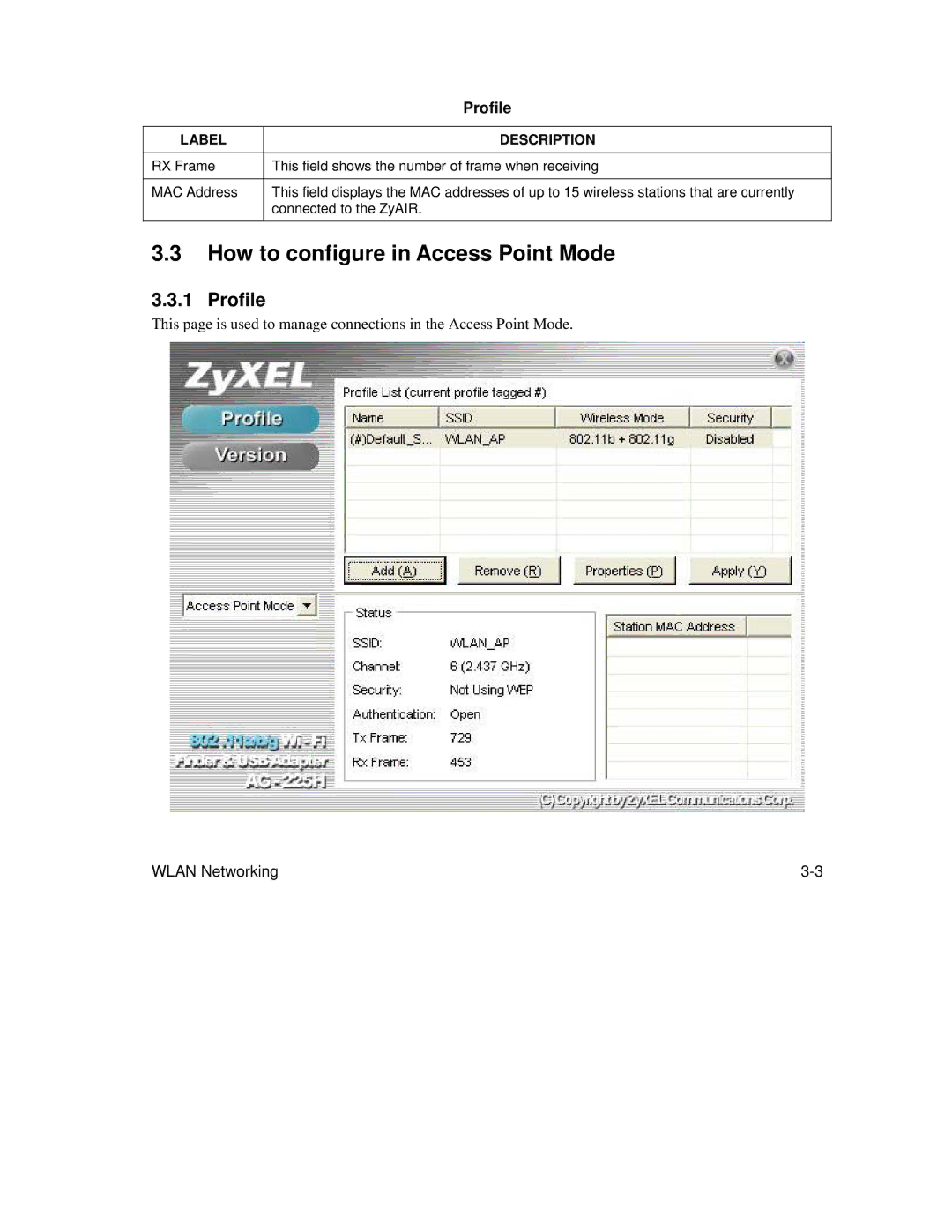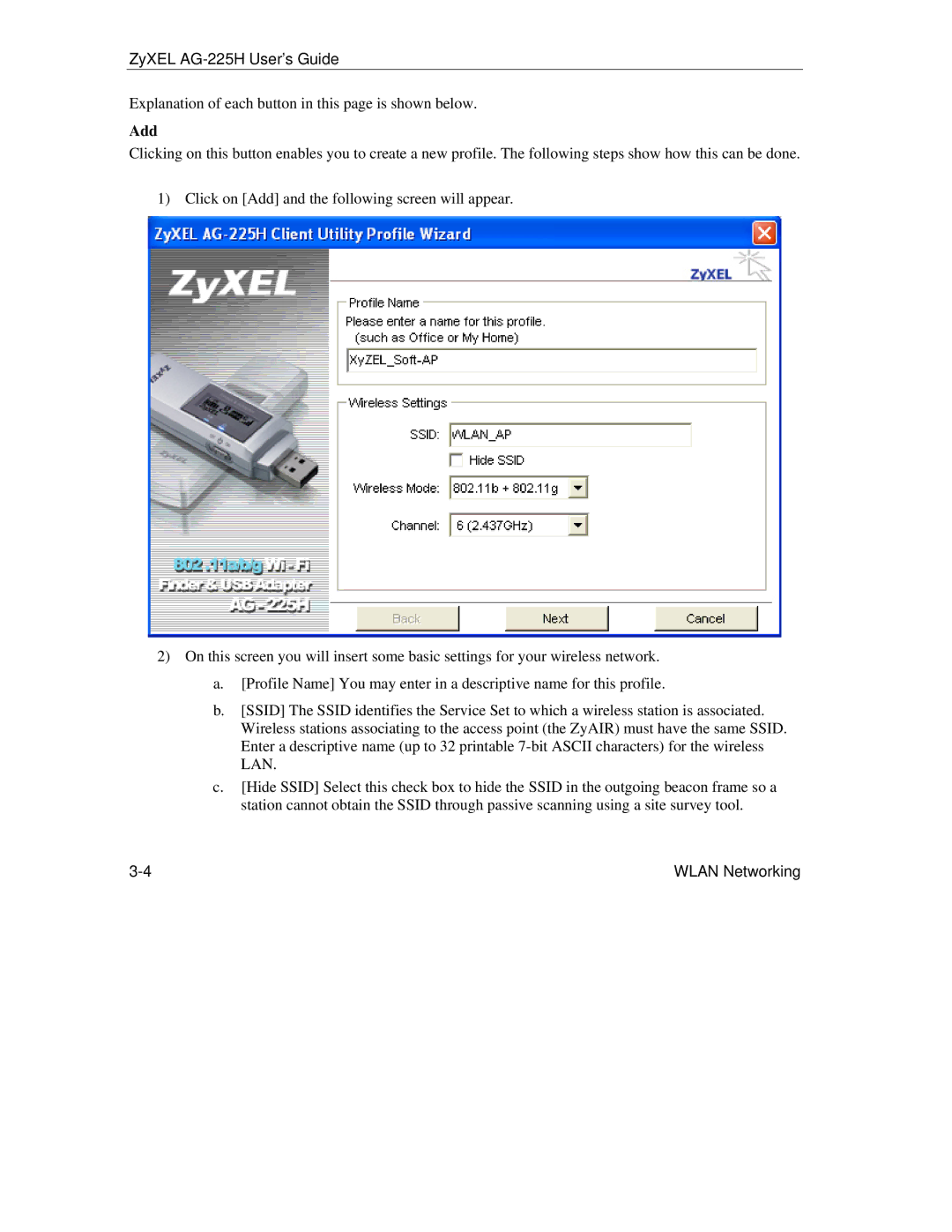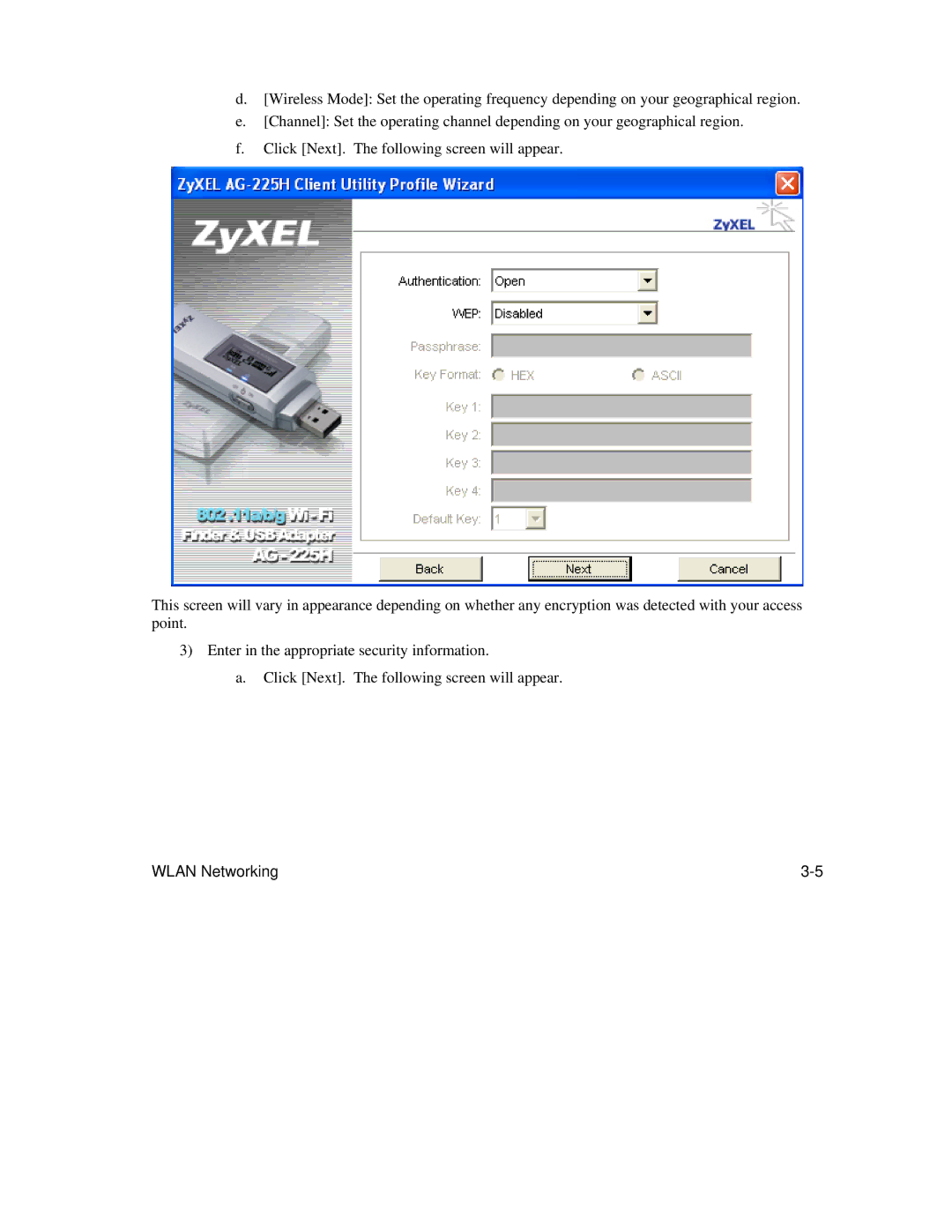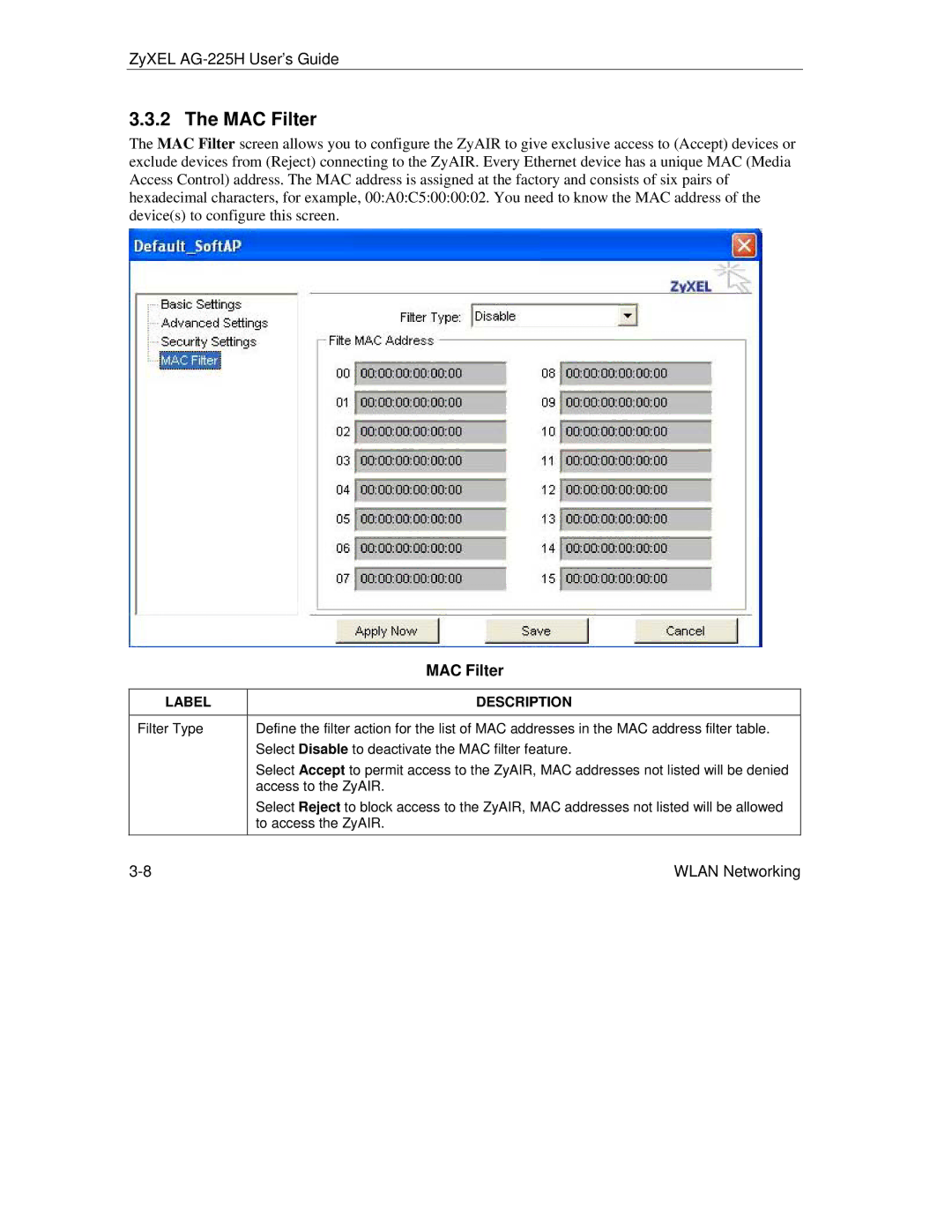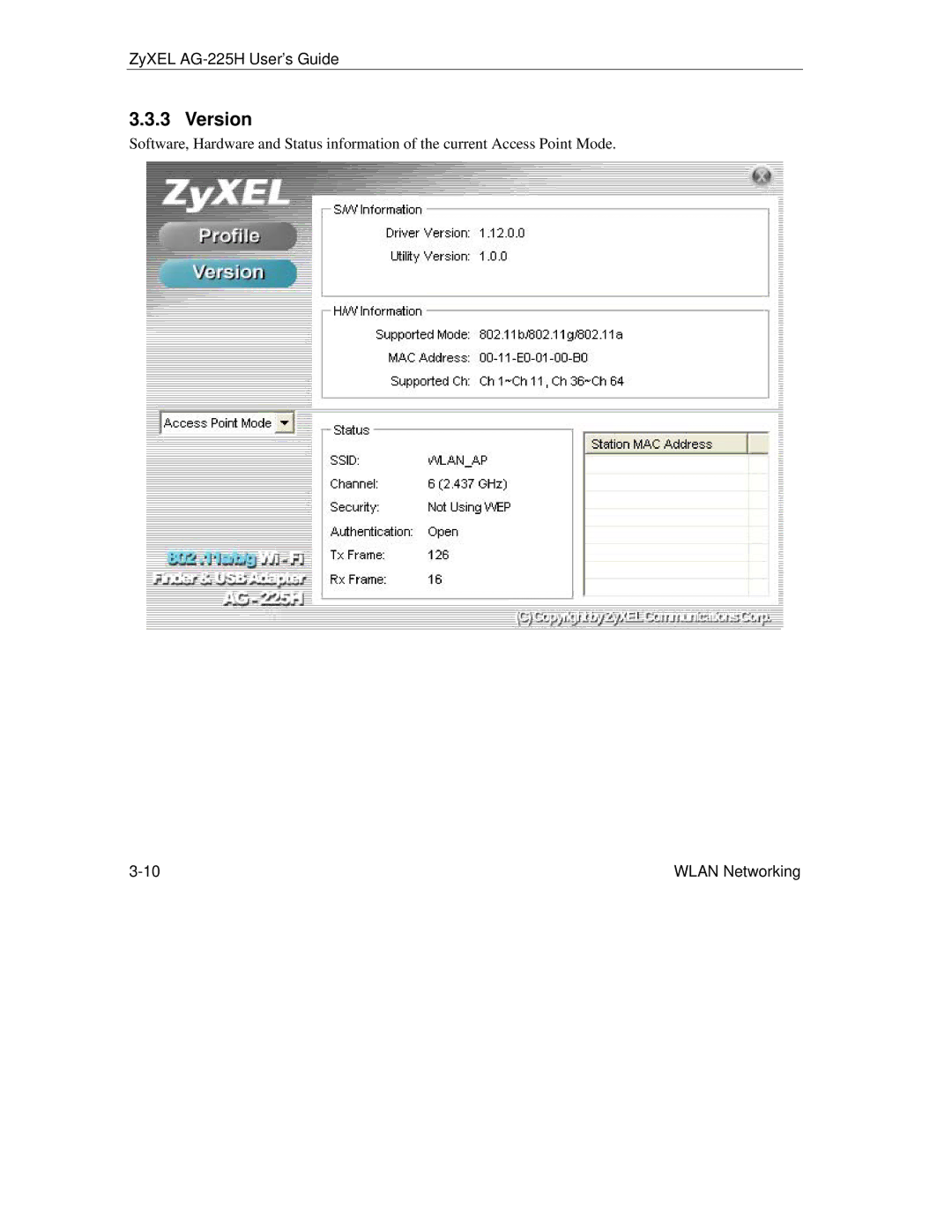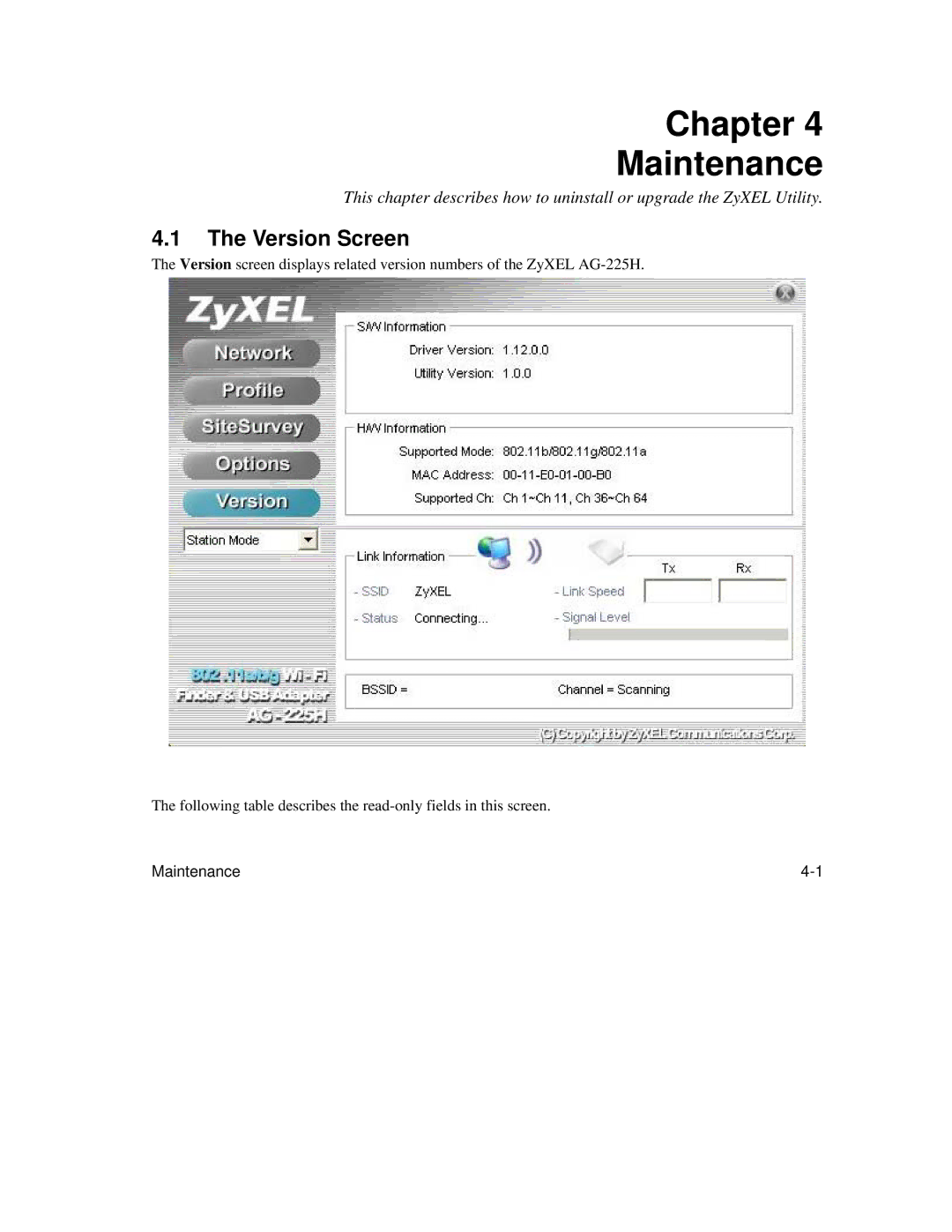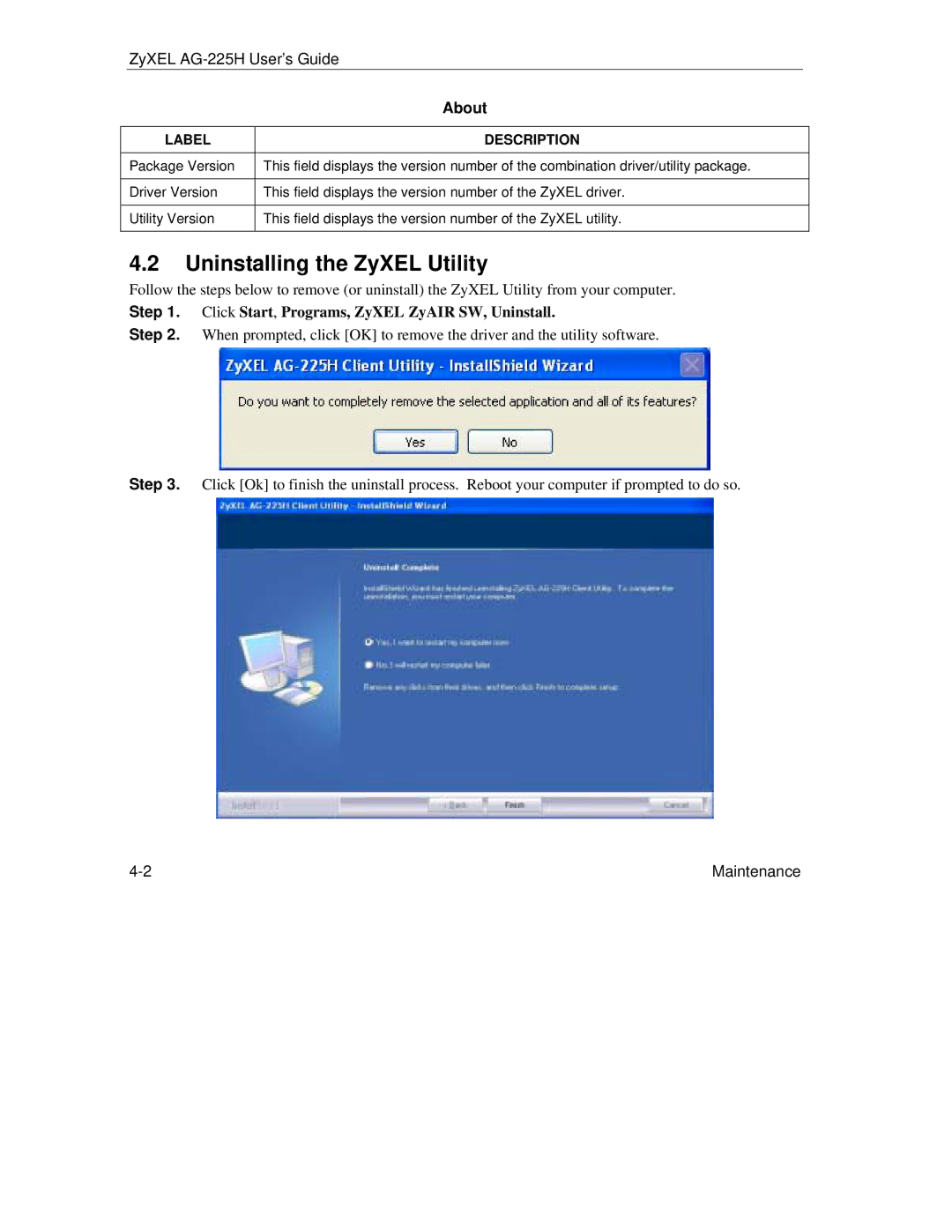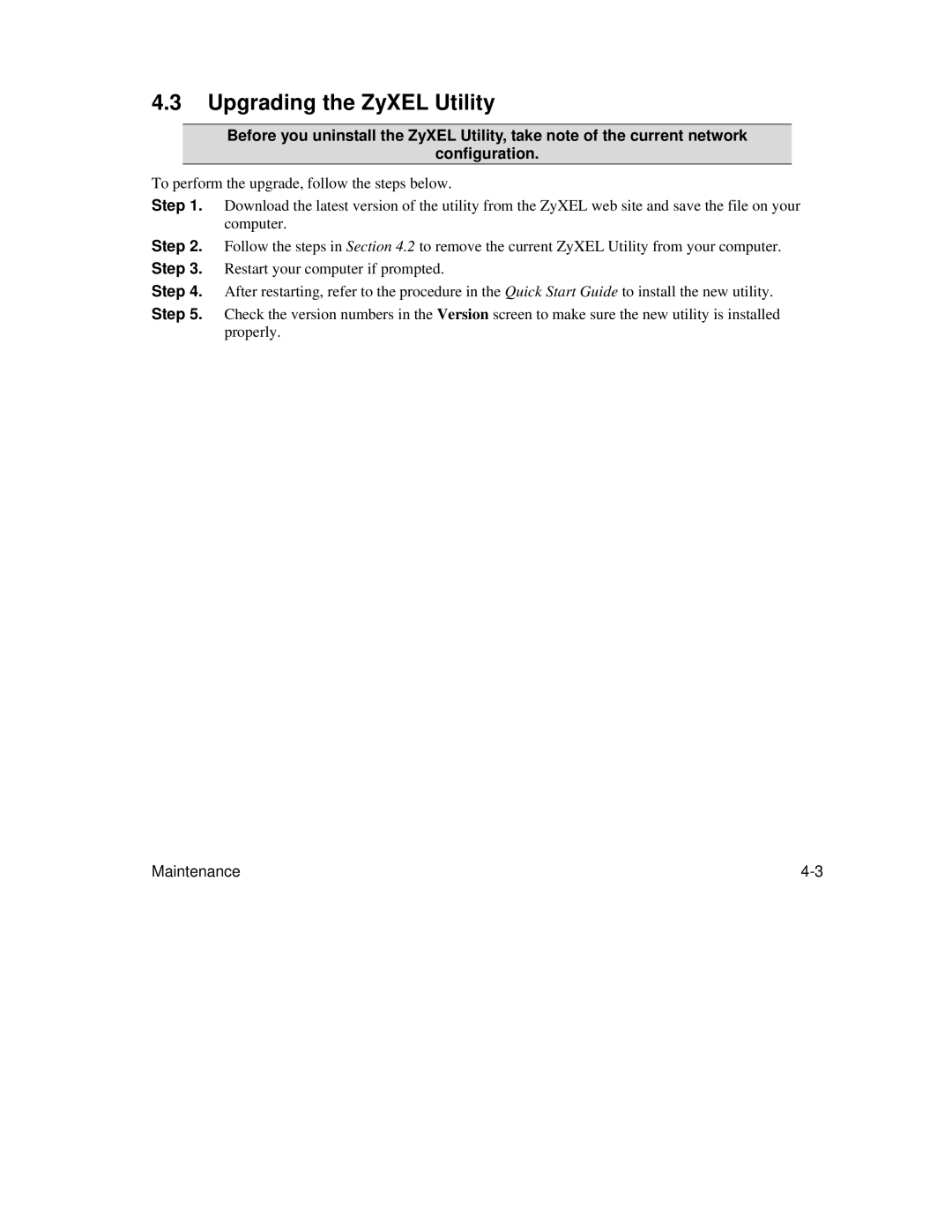Chapter 2
Wireless LAN Networking
This chapter provides background information on general wireless LAN networking technology and terminology.
2.1Overview
This section describes the wireless LAN network terms and applications.
2.1.1SSID
The SSID (Service Set Identity) is a unique name shared among all wireless devices in a wireless network. Wireless devices must have the same SSID to communicate with each other.
2.1.2 Channel
A radio frequency used by a wireless device is called a channel.
2.1.3 Transmission Rate (Transfer Rate)
The ZyXEL AG-225H provides various transmission (data) rate options for you to select. Options include Fully Auto, 1 Mbps, 2 Mbps, 5.5 Mbps, 11 Mbps, 6 Mbps, 9 Mbps, 12 Mbps, 18 Mbps, 24 Mbps, 36 Mbps, 48 Mbps and 54 Mbps. In most networking scenarios, the factory default Fully Auto setting proves the most efficient. This setting allows your ZyXEL AG-225H to operate at the maximum transmission (data) rate. When the communication quality drops below a certain level, the ZyXEL AG-225H automatically switches to a lower transmission (data) rate. Transmission at lower data speeds is usually more reliable. However, when the communication quality improves again, the ZyXEL AG-225H gradually increases the transmission (data) rate again until it reaches the highest available transmission rate.
2.1.4 Wireless Network Application
Wireless LAN works in either of the two modes: ad-hoc and infrastructure.
To connect to a wired network within a coverage area using Access Points (APs), set the ZyXEL AG-225H operation mode to Infrastructure (BSS). An AP acts as a bridge between the wireless stations and the wired network. In case you do not wish to connect to a wired network, but prefer to set up a small independent wireless workgroup without an AP, use the Ad-hoc (IBSS) (Independent Basic Service Set) mode.
